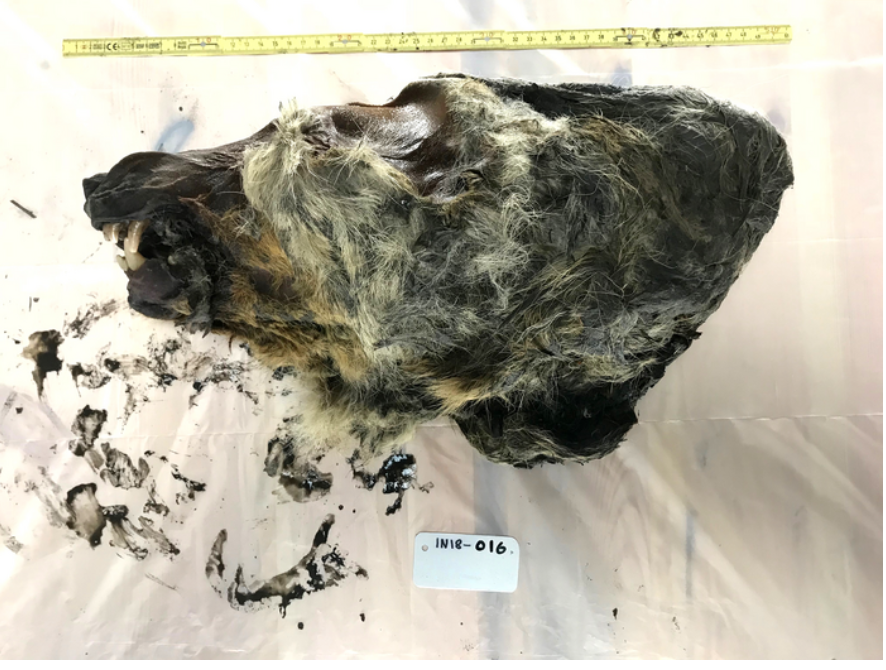New Ice Age DNA shows your dog comes from separate ancient wolf populations, study says
Two different ancient wolf populations contributed DNA to modern dogs, according to a study by an international group of geneticists and archaeologist.
Dogs are known to have descended from the gray wolf, and domestication came about 15,000 years ago during the Ice Age, the Francis Crick Institute in London reports. What remains unknown, researchers said, is where it happened and whether it occurred in one or more places.
Earlier studies using the archaeological record and comparing the DNA of dogs and modern wolves have not found the answer, Crick researchers wrote in new findings released Wednesday.
In the peer-reviewed study, published in Nature, researchers from the institute said they charted the genetic history of the gray wolf over the past 100,000 years by analyzing 72 ancient genomes from Europe, Siberia, and North America.

“Through this project we have greatly increased the number of sequenced ancient wolf genomes, allowing us to create a detailed picture of wolf ancestry over time, including around the time of dog origins," Anders Bergström, a postdoctoral researcher in the Ancient Genomics lab at the Crick said in a news release. “By trying to place the dog piece into this picture, we found that dogs derive ancestry from at least two separate wolf populations – an eastern source that contributed to all dogs and a separate more westerly source, that contributed to some dogs.”
According to the institute, the DNA came from remains of previously excavated ancient wolves, and archaeologists from 38 institutions in 16 countries contributed to the study.
The remains included "a complete, perfectly preserved head from a Siberian wolf that lived 32,000 years ago," Crick researches reported. Nine different laboratories then collaborated on generating DNA sequences from the wolves.
By analyzing the genomes, scientists found that early and modern dogs are more genetically similar to ancient wolves in Asia than those in Europe, suggesting domestication took place somewhere in the east.
Our wolf paper is out! https://t.co/y3KQnxRlYz Analysing 72 ancient 🐺 genomes from the last 100,000 years, we: #1 chart wolf natural history through the Ice Age, #2 directly detect natural selection, #3 reveal that dogs have dual ancestry. A 🧵 (11), illustrations by @jessrpeto pic.twitter.com/rY3VxnMzX6
— Anders Bergström (@andersbrgstrm) June 29, 2022
Dogs and COVID: Trained dogs may be better at detecting COVID than nasal PCR tests, study suggests
Mysterious space crash: NASA baffled by 'mystery rocket body' that crashed into the moon
We know dogs evolved from grey wolves – but we’ve never known where 🤔
A team led by @andersbrgstrm and @pontus_skoglund analysed 72 wolf genomes spanning 100,000 years to show that dogs link back to least two different ancient wolf populations 🐺🐶 https://t.co/0ABR9Z7zUT— The Crick (@TheCrick) June 29, 2022
Researches also said they discovered two separate ancient wolf populations contributed DNA to dogs.
Early dogs from northeastern Europe, Siberia and the Americas appear to have a single, shared origin from the eastern source, researchers wrote in their study. But early dogs from the Middle East, Africa and southern Europe appear to have some ancestry from another source related to wolves in the Middle East, in addition to the eastern source.
Natalie Neysa Alund covers trending news for USA TODAY. Reach her at nalund@usatoday.com and follow her on Twitter @nataliealund.
This article originally appeared on USA TODAY: Ice Age DNA shows dogs comes from two ancient wolf populations

 money
money 